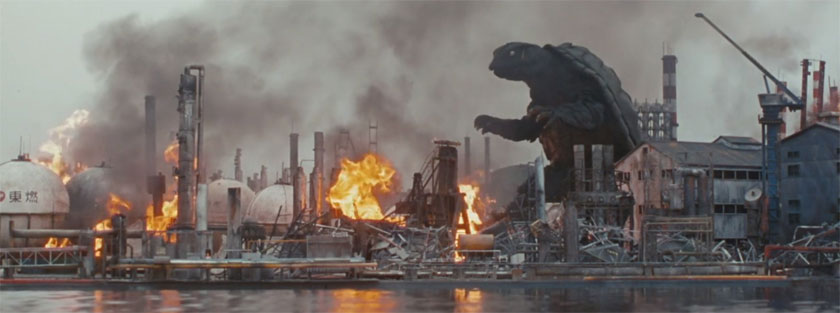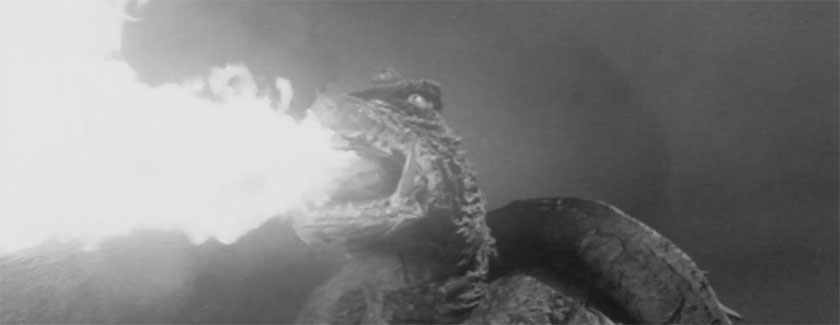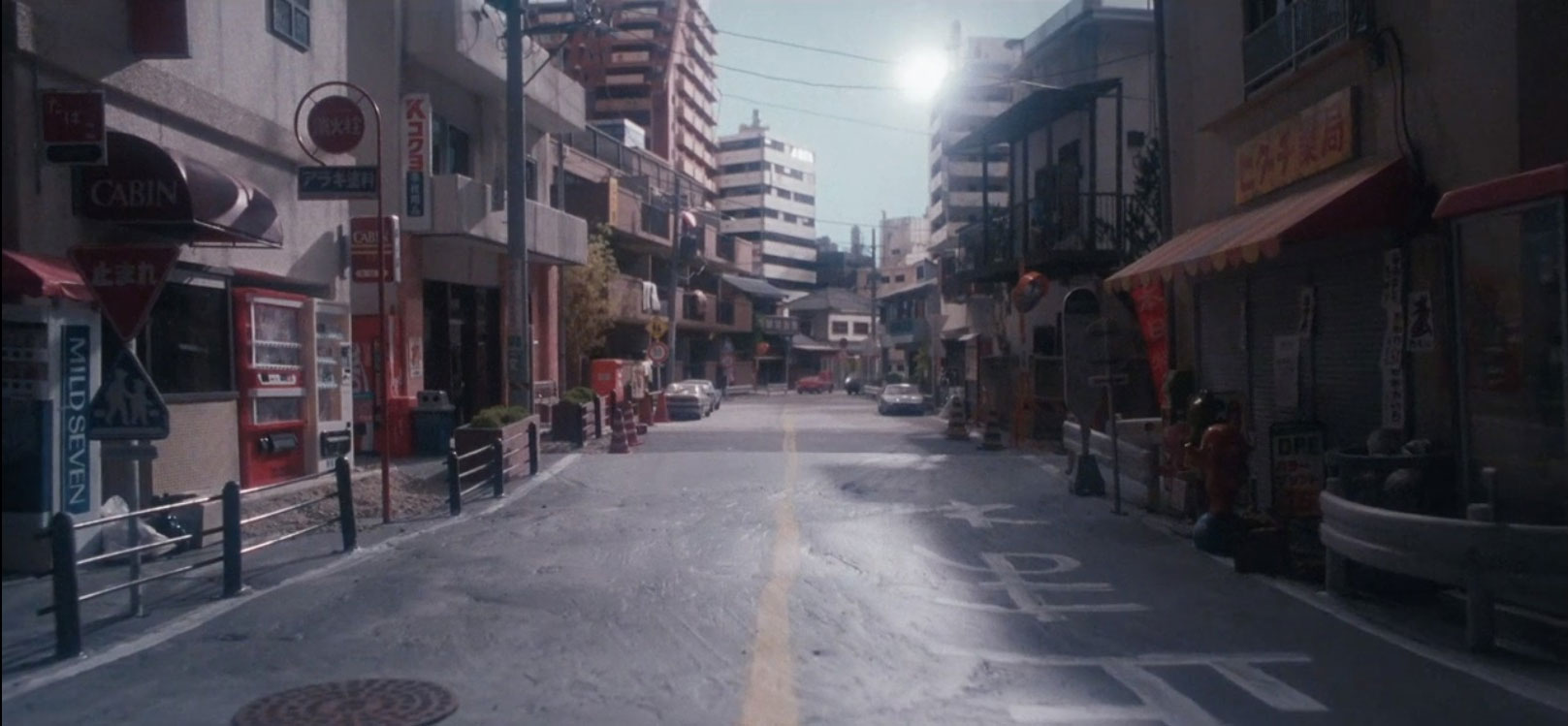I Finally Watched Some Gamera Films

Godzilla is one of those few non-video game properties that has managed to stick with me throughout my entire life. Since I discovered him around the age of five and onward, I’ve always felt a love of his big stompy feet and deadly radioactive flame breath. It was this love that led me to discover and see a live show for Kaiju Big Battel and a deep appreciation for Guillermo Del Toro’s Pacific Rim despite its mediocre characters and leaps of logic.
Never had I really explored kaiju cinema beyond Godzilla, however. Not in regards to the many Japanese properties, at least. I’d always been curious about Gamera, the colossal turtle whose filmography is mostly only known to kaiju enthusiasts. Godzilla had enough mainstream clout and recognition to get a poor Hollywood adaptation released in 1998, followed by a proper American recreation in 2014, but the odds of there ever being a blockbuster budgeted Westernization of Gamera has been slim-to-none. Unless you were a prominent viewer of Mystery Science Theater 3000 in the 90’s, or a child exposed heavily to the cheaper film fare licensed out to local UHF television stations, you were unlikely to ever come across the name “Gamera” outside of kaiju enthusiast circles. Scanning through Amazon Prime’s video library recently, however, I noticed quite the collection of the beast’s films available for streaming. Now was the time to expand my knowledge of massive monsters and see for myself if Gamera had what it took to stand beside one of the most iconic colossal creatures in cinematic history.
I’ve only watched the original Gamera, the Giant Monster, released in 1965, as well as its 30th anniversary reboot Gamera: Guardian of the Universe. Incomplete though it may be, I figured these two films would serve as a foundation for what would define the Gamera films in each generation’s origin. On a superficial level, neither film was as good or entertaining as select Godzilla films from those respective eras.
Nonetheless, I found each film quite fascinating in their own right.
The weakest aspect of the Gamera films is, by far, their core plot. Whereas Gojira was written a decade prior as a reflection and commentary on nuclear power and the manner in which Japan had suffered and recovered from it, Gamera, the Giant Monster was created for no reason other than to make a competing giant monster movie. Daiei Film’s then-President Masaichi Nagata had wanted to craft a film inspired by both Gojira and Alfred Hitchcock’s The Birds. Unfortunately, that particular film, Nezura, which would have been about an infestation of man-eating, mutating vermin, was cancelled due to health department concerns regarding the brown rats used in filming. Gamera was made afterwards.
In other words, it is a film made not in order to express a feeling or philosophy of the film maker(s), but to simply cash-in with an imitation. There’s an element of “heart” absent from Gamera that defines the original Gojira. Doctor Serazawa is conflicted between his responsibility to defeat the amphibious leviathan that threatens the world and his desire to keep the potentially worst weapon created by man out of the hands of competing, warring governments. In the end, he unleashes the weapon upon the beast Godzilla, but not before destroying all of his research, and not without taking his own life. It is a philosophical conflict that remains relevant to this day and is what elevates the material beyond its dated puppetry and old-fashioned special-effects.
Gamera, on the other hand, concludes with the colossal tortoise being tricked onto a rocket and launching it into outer space. The conclusion is clean, swift, and efficient, allowing the film its terror and chaos before concluding just as the run time demands. Perhaps there’s something said in brief moments of jet fighters flying overhead in the early minutes of the film regarding Cold War powers, but at its core Gamera is about little more than a giant turtle stomping around Japan causing havoc.

Despite being clearly visible, the blowtorch inside the Gamera puppet or costume allows the filmmakers to use more impressive pyrotechnics than the Godzilla films typically have on offer.
Nevertheless, I found the experience entertaining. This is in part due to what I can only think to describe as the “innocence” of older film. I cannot imagine that audiences believed such special effects “looked real”, but there must have been a greater willingness to buy into the illusion being sold. As impressive as it can be, there’s so much technology and computer generation put into increasing visual fidelity that it creates a sense of skepticism. You cannot trust anything you see on screen, and it washes most imagery over with such a clear lens of artificiality. Once you discover that a show like The Mandalorian is filmed almost wholly in Unreal Engine, it’s not as if a spell is broken. It’s more that you better understand why it never looked quite right in the first place.
Fidelity and verisimilitude in an old film like Gamera takes on a different meaning because everything on-screen is tangible, and that is where I believe its strength lies. It was made a decade after the original Gojira and so had the advantage of lessons learned since the original inception. Even so, I’d say many of the effects found in Gamera more than held their own compared to Toho’s release of Invasion of Astro Monster that very same year. Where the fire breath of Godzilla and lightning bolts of Ghidorah were being drawn onto the frames in the old-fashioned style, Gamera was spewing actual flames from his mouth. Perhaps it is the advantage of being filmed in black-and-white. Invasion of Astro Monster, by contrast, is in full color, which may have only emphasized a “cheap” look by modern standards. However, if there was anything that shocked me in the film of Gamera, it was how good the costume itself, the miniatures, and the flame effects looked.
There were obviously moments where it looked cheap as well. The moment that the child falls from and hangs onto the railing of the lighthouse, for example, or the air-brushed spiral jets depicting Gamera’s UFO-style flight across the sky. Nevertheless, for a film that Daiei themselves had little faith in and expected to fail, the special effects were pulled off surprisingly well. Even if the plot had no heart placed in it, you could tell those working on the film were putting their soul into its look.
Which is precisely what had me curious enough to jump right into Gamera: Guardian of the Universe. Despite growing up with the Showa era of Godzilla films, I ultimately preferred the Heisei era of colossal wrasslin’ due to an improvement in acting, continuity, story-telling (as campy and cheesy as it remained), and special-effects. I wanted to know how Gamera’s reboot compared ten years after Godzilla had reinvented itself.
Narratively, the end result was similar. Aside from some potential environmentalist talk, there’s no real sense of purpose for the film to exist aside from existence itself. When Toho soft-rebooted Godzilla in the mid-eighties, it was to not only remind younger generations of the terrifying power of nuclear war, but to present a Japanese perspective and philosophy on the Cold War; it took a stand as the lone nation to suffer under nuclear power against the two national giants wielding said power so irresponsibly. Gamera: Guardian of the Universe, on the other hand, says nothing. It is also too modern to get away with all of its camp and cheese without some laughs here and there.

I cannot help but wonder if this model street would be a bit more convincing if it weren’t for the paved road looking obviously artificial. The fine details are greater than you typically get in a Godzilla film.
Nonetheless, I continued to find it interesting how different the philosophy seemed to be regarding Gamera’s own costume. There seems to be a lot more puppetry involved in even modern Gamera as opposed to the adherence of outfits and body suits in the Godzilla films. While the villainous beasts dubbed Gyaos were always clearly a puppet, there was still a detail to their and Gamera’s design that impressed in terms of craftsmanship.
Yet at this point it did not outcompete with what Toho could put together in a Godzilla film. Instead, what truly had me impressed were the quality of the miniatures. It’s hard to really describe why it impressed me so much, as there was never a moment I believed they were real buildings. Nonetheless, there was such a level of detail that allowed me to more easily buy into the illusion being sold. I believe the secret is in the smaller size of Gamera and the Gyaos when compared to Godzilla and his skyscraper-sized titanic antagonists. Gamera is a smaller beast, and therefore the miniatures themselves do not need to be reduced to as small a scale. This allows for more intricate little details to be visible, and therefore to be more convincing. The smaller a model of an object becomes, the more it looks precisely like that: a model. The details of the scaled-down sets of Gamera, however, allowed such a degree of fine fidelity as to increase believability.
As of now I’m not sure I consider Gamera to be a “must-watch” for kaiju fans, but as I’ve stated before, I’m a Godzilla fan first. It is because of Godzilla that I have an interest in other giant creature features in the first place. From my understanding, however, there are possible themes and concepts written into the other films that I may find more fascinating than Gamera’s initial birth and rebirth.
Perhaps, after watching more of the filmography, I’ll come back with some additional thoughts.


